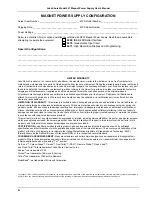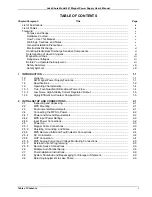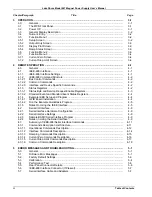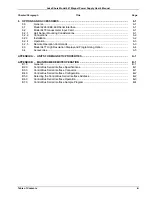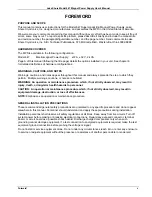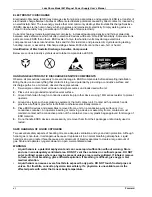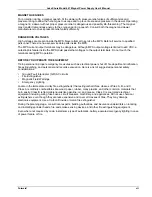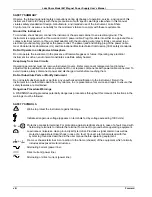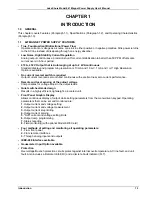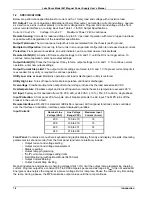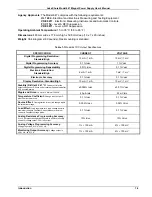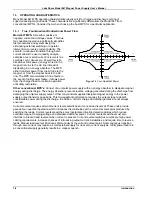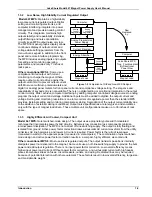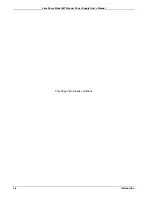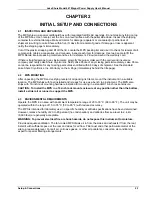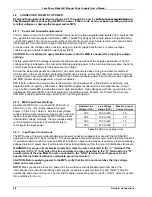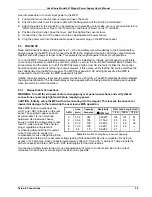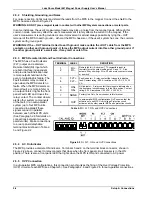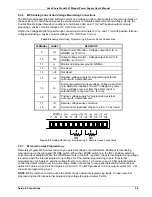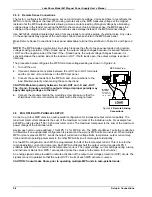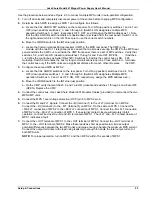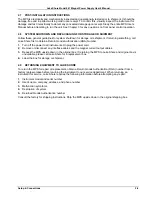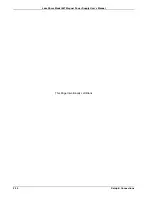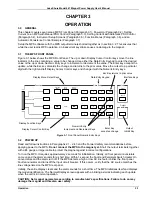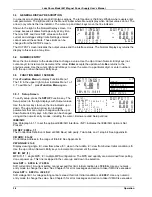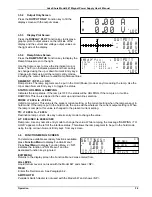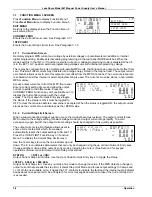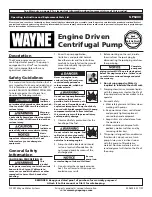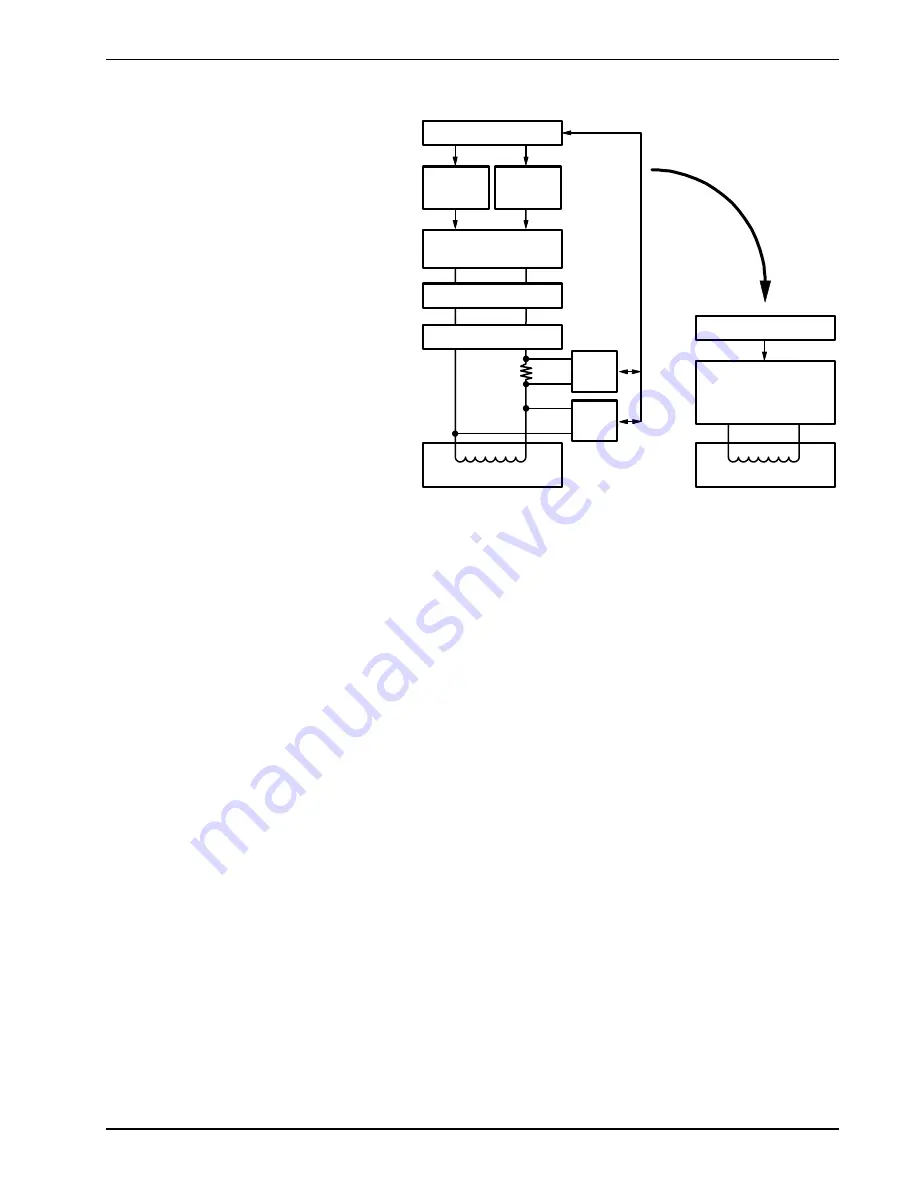
Lake Shore Model 647 Magnet Power Supply User’s Manual
Introduction
1-5
1.3.2 Low Noise, High Stability Current Regulated Output
Model 647 MPS:
Maintains a high-stability
low-noise current-regulated output. Digital
setting and monitoring electronics, and
computer interfacing integrate into power
management and precision analog control
circuitry. This integration maintains high
output stability and repeatability. Extensive
output filtering and noise cancellation
circuitry keep MPS output noise very low.
The MPS front panel graphic display allows
continuous display of output current and
voltage while setting parameters from the
menu-driven keypad. In addition to the front
panel and remote interface programming,
the MPS includes analog inputs and outputs
for setting and monitoring operating
parameters and requires only 7 inches of
rack space.
Other conventional MPS's:
Some use a
compliance limited output with current
monitoring to charge the magnet. Others
require output current to drive against the
output current limit to prevent output current
drift. Most use multi-turn potentiometers and
digital (or analog) panel meters for front panel current and compliance voltage setting. The elegance and
repeatability of keypad entry is not available. There is no digital setting or monitoring integration in the output
control circuitry. Most achieve computer interfacing by adding computer controlled voltage sources to analog
program the output current and voltage. Additional inputs must be added to digitize the output current and
voltage. Setting and monitoring resolution is one to two orders of magnitude poorer than the standard MPS
provides. External setting and monitoring complicates cabling. Degradation of the output current stability due
to the addition of external cabling is undefined. Output noise specifications are rarely given and sometimes
vary with the type of magnet load driven. These multiple unit configurations require up to 36 inches of rack
space.
1.3.3 Highly Efficient, Air Cooled, Compact Unit
Model 647 MPS:
Quiet switched-mode design. The output uses a proprietary pulse width modulated
technique that incorporates power hybrid circuitry. Extremely low conduction loss components minimize
internal power dissipation. The MPS is not a direct off-line switching supply. The output is fully floating and
isolated from ground. Active power factor correction draws a sinusoidal AC current waveform from the utility,
minimizes AC line harmonics, and lowers AC current required. Power factor is the ratio of real power
(measured in watts) to the apparent power (measured in volt-amperes). The combination of quiet switched-
mode design and active power factor correction results in a compact, highly efficient, air-cooled unit.
Other conventional MPS's:
Most use linear regulated outputs. The output transistor pass-bank internally
dissipates power not delivered to the magnet. Some units use an off-line switching supply to provide the bulk
power and add output regulation. There is no input power factor correction. Low overall efficiency means
higher input power and current. Without power factor correction, a non-sinusoidal current with high peaks
places tremendous stress on fuses, circuit breakers, outlets, and wiring. Dedicated lines may be required
because of potential interaction with other equipment. These factors result in low overall efficiency, large size,
and considerable weight.
Magnet Load
Analog
Current
Programmer
Analog Programmed
Power Supply
Current Reversal
Energy Absorber
Analog
Voltage
Programmer
Computer
DVM
Current
Monitor
DVM
Voltage
Monitor
Magnet Load
Lake Shore MPS
True, Four-Quadrant
Bi-Directional
Power Flow
Computer
Now
Replaced
by:
Figure 1-2
Comparison of Old and New MPS Designs


